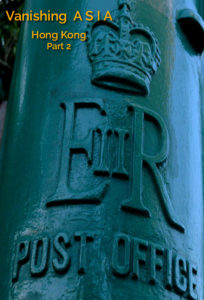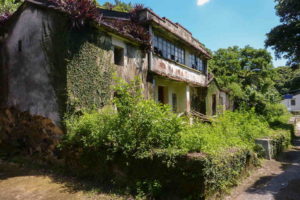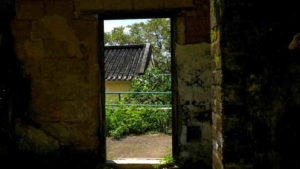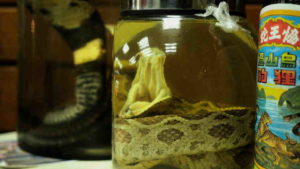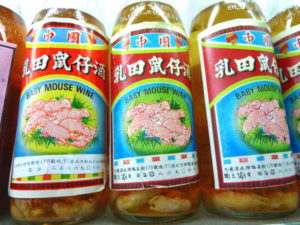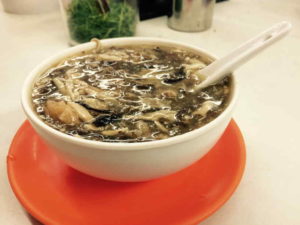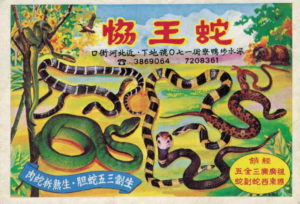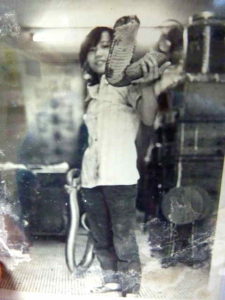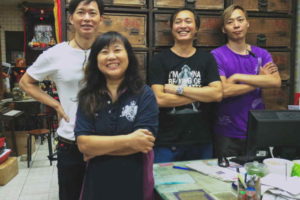“A Royal Cover-Up”
Even with all the technology around them, people in Hong Kong still post letters. The Hongkong Post handles over 3.3 million letters, parcels and packages per day. So they’re pretty good at it.

Hong Kong’s first official postmark
In fact, Hong Kong’s post office has been officially delivering the mail since August 24th 1841. That’s one year before Great Britain took formal possession of the territory.
So after more than 175 years, what could possibly threaten the postal service?
This…

‘GRV’ crest honoring King George the Fifth (circa 1910)
… a British Royal insignia.
In 1997, Great Britain returned Hong Kong to China. One of the changes that occurred was the introduction of modern non-colonial style postboxes.
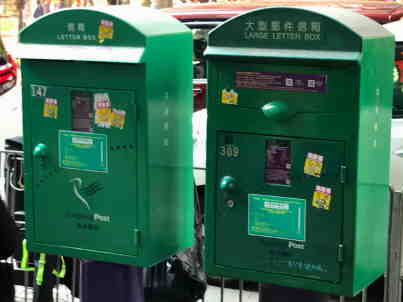
Post-1997 modern block-style letterboxes in the new green color
Today, of the 1,100 active letterboxes scattered throughout Hong Kong, 59 are vintage. And each classic postbox still bares the royal insignia of the prevailing monarch.

An original colonial postbox in its original red color (QEII crest)
Of those remaining, 7 still display “GRV” for King George the Fifth during his reign from 1910 to 1936.
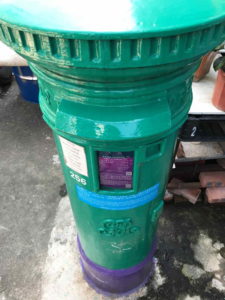
Pillar-style vintage postbox honoring King George the Fifth (circa 1910) in the new green color (located in Sok Kwu Wan on Lamma Island)
Another 7 showcase “GRVI” for King George the Sixth’s reign from 1936 to 1952. And a final 45 sport an “ERII” crest… honoring Queen Elizabeth the Second and her reign beginning in 1952.

An operational vintage postbox with ‘ERII’ crest honoring Queen Elizabeth II repainted in the Post-1997 green color (located on The Peak)
Now, two decades later, the Hong Kong Postmaster General announced that the royal cyphers had to go. It was decided that a metal plate would be bolted over the insignia to hide it.
The reason… according to the official statement, the vintage postboxes are “inappropriate” and may cause “confusion.”
Conspiracy theories abound. Some call it a plan to hide history. Many point to China’s discomfort with Hong Kong’s colonial past.

Dr. Steven Gallagher, an expert on cultural heritage law
“That’s been a big issue. People have become upset about this. You do see these old postboxes that are a legacy of the old colonial era.” – Dr. Steven Gallagher (Professor, Chinese University of Hong Kong)
And what of other reminders of Hong Kong’s colonial past? What should happen to them? Should one just erase history? Is it a conspiracy? Or a tempest in a teapot?
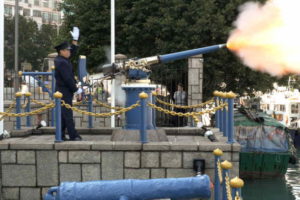
The very colonial Noon Day Gun continues to be fired daily
It’s all revealed in Episode 5 – Hong Kong: Part 2 in “Vanishing ASIA.”

